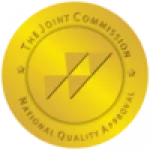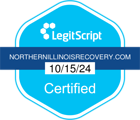What Is Methadone?
Methadone is a narcotic medication or opioid used to treat pain in individuals. It helps individuals get through the detoxification process and reduces withdrawal symptoms for those that engage in narcotic drugs such as heroin.
The process is without producing feelings of getting high. Methadone is used for pain management for individuals with chronic long-term pain that hasn’t responded to other treatment methods.
The drug is detected in urine tests for up to two weeks, salvia tests for days, blood tests for days, and hair tests for months. It is a drug used in medication-assisted treatment (MAT) to assist individuals in reducing or quitting the use of heroin or other opiates.
It has been used for decades to treat individuals addicted to narcotics and heroin pain medications. When it’s taken as prescribed, it is considered safe and effective.
It allows individuals to recover from addiction and reclaim meaningful and active lives. To achieve optimal results, patients should participate in a comprehensive MAT program. This type of program includes social support and counseling.
What Are Some Specifics About Methadone?
 There are some specifics about Methadone. It is available under the brand names Dolophine and Methadose. Most commonly prescribed as a solution or tablet taken by mouth. In a few cases, doctors can administer doses of the drug through an injection.
There are some specifics about Methadone. It is available under the brand names Dolophine and Methadose. Most commonly prescribed as a solution or tablet taken by mouth. In a few cases, doctors can administer doses of the drug through an injection.
Methadone has widely become a prescribed medication because it’s usually more cost-efficient than other prescription painkillers. SAMSHA explains that methadone can work by affecting the nervous system’s response to pain and the brain. Painful opioid withdrawal symptoms and euphoric effects of feeling high become blocked.
SAMSHA refers to the process as medication-assisted treatment (MAT). This treatment combines participation and therapy in support groups that provide a comprehensive addiction program.
According to SAMSHA, individuals that receive methadone opioid treatment must participate in a drug treatment program. Throughout this treatment program, healthcare providers can monitor and provide methadone for each patient as needed.
Methadone is only acquired through a certified opioid treatment program.
Common side effects of opioids include:
- Difficulties breathing
- Trouble sleeping
- Legs swelling
- Arms swelling
- Hives or rash
- Arms swelling
- Hallucinations
- Constipation
- Vomiting
- Tiredness
- Sweating
- Dizziness
- Chest pain
- Confusion
- Nausea
How Long Does Methadone Stay In Your System?
Several factors influence how long methadone stays in your system.
- Additional Illnesses
- Metabolism
- Function
- Weight
- Liver
- Age
- Concurrent use of substances
- Frequency of use
- Methadone use
- Dosage amount
All these factors impact how quickly methadone gets processed in the body.
There are clinical options that explain how long does methadone does stay in your system. It varies anywhere from 2 to 13 days. Typically, it’s processed out of the system within two weeks, and traces can appear for much longer.
It all depends on the type of drug test used. Addiction treatment programs, athletic employees, law enforcement officials, and employers may request methadone drug tests.
Even though standard drug tests are used for opioid use like codeine, morphine, and heroin, methadone doesn’t get picked up. Due to this, particular and more expensive tests must be used if the drug test is screening for methadone use.
Saliva, hair, blood, and urine tests have been developed to test for the presence of methadone in the system.
These tests offer more of a non-invasive and convenient way to test for methadone use. Traces are detected in a person’s saliva 30 minutes after the ingestion. From there, it remains for a couple of days following the last use.
Methadone can be detected in the blood within 30 minutes of the last use and remain detectable up to a few days. Even though blood tests are hugely accurate, they are invasive, costly, and have a relatively short detection window. Therefore, blood tests aren’t used to treat methadone.
These are the most common form of testing for methadone use. Urine detection use in a user’s system is an hour to two weeks following the last ingestion. Since urine tests are easy to administer, relatively inexpensive, and noninvasive with a long detection period, they are typically the preferred method of methadone testing.
The hair tests are used to test methadone gradually. An individual with a long-lasting habit of methadone use will have traces of methadone in their hair.
For a person who has just started taking methadone, it can take a few weeks for methadone to appear in the hair. Generally, hair tests are used for testing for long-lasting methadone, since traces of the drug will remain in the hair for several months after the last use.
It’s accepted that methadone will process out of an individual body within two weeks. In comparison to methadone, Suboxone which is another pharmaceutical medication used for opioid treatment essentially clears from the system within nine days to two weeks.
On the other hand, heroin is a potent drug derived from morphine, and it has a much shorter half-life than methadone over Suboxone. Due to this, it clears out of the body much quicker.
It is cleared out of the system in less than an hour, even though the morphine ingested from the heroin can take up to two days to clear from the body.
How Does Methadone Effect Drug Tests?
 Methadone affects drug tests because it will not produce positive results on an opiate standard test. It will only be detected if a person is specifically tested for methadone, which isn’t considered common practice.
Methadone affects drug tests because it will not produce positive results on an opiate standard test. It will only be detected if a person is specifically tested for methadone, which isn’t considered common practice.
Individuals in a medication-assisted treatment program are covered by the Americans with Disabilities Act. It cannot be denied employment based on participation in such a treatment program.
Does Methadone Show Up On A Drug Test
Does methadone show up on a drug test? No, unlike heroin and prescription pain medications, methadone is not detected in common urine tests. It can only be identified through a specialized methadone test, which is not a common practice.
Drug tests usually detect opiate drug use, such as codeine, heroin, or morphine but they don’t normally detect methadone. This would require a more specialized drug test that searches for the particular chemical makeup.
Some fairly basic over-the-counter drugs sometimes show a false positive for methadone. For example, Diphenhydramine, which is commonly found in OTC antihistamines such as Benadryl, occasionally displays like methadone on a drug test.
What Are Some Side Effects of Using Methadone?
Short-Term Side Effects
- Upset stomach or vomiting
- Appetite changes
- Vision problems
- Heavy sweating
- Mood changes
- Restlessness
- Constipation
- Weight gain
- Itchy skin
- Flushing
Serious Side Effects
- Swollen tongue, lips, face, or throat
- Rapid heartbeat or chest pain
- Unusual menstrual periods
- Confusion or hallucinations
- Lightheadnesses or fainting
- Trouble swallowing
- Severe drowsiness
- Trouble breathing
- A hoarse voice
- Rash or hives
- Seizures
When Do People Typically Use Methadone?
Typically, methadone is used under medical supervision for opioid dependence. It is taken orally whereas heroin is often injected. This can lead to HIV transmission if syringes and needles are shared.
When individuals are heroin-dependent, they often spend most of their time trying to obtain and use. This can involve criminal activity such as stealing. Patients on methadone don’t normally do this act. Instead, they undertake productive activities such as employment, parenting, and education.
As mentioned, Methadone is an opioid such as opium or heroin. Methadone maintenance has been utilized to treat opioid dependence since the 1950s. The patient is opioid-dependent and takes a daily dose of methadone as a pill or liquid.
Overall, this reduces opioid cravings and opiate withdrawal symptoms. Similar to other opioids, methadone is highly addictive. However, being on methadone isn’t the same as being dependent on illegal opioids like heroin.
How Does Medication-Assisted Treatment Help?
Medication-assisted treatment (MAT) is the use of medications, utilized in combination with behavioral and counseling therapies. This is to provide a “whole-patient” approach to substance use disorders (SUDs) treatment. It helps in several ways.
The Food and Drug Administration (FDA) approved the MAT medications and programs to be clinically tailored and driven to meet patients’ needs. Research has shown that a combination of therapy and medication can treat these disorders successfully.
For some individuals struggling with MAT can assist in sustaining recovery. It is also used to reduce or prevent opioid overdose. MAT is primarily used for opioid addiction treatment such as prescription pain relievers and heroin that contain opiates.
The prescribed medication operates to normalize body functions without the euphoric and negative effects of the substance used. MAT has been proven to be clinically effective and reduce the need for inpatient detoxification services for these same individuals significantly.
It provides a comprehensive, and individually tailored medication program and behavioral therapy that addresses the needs of various patients. Ultimately, the goal of MAT is full recovery, including the ability to live a self-sufficient life. The treatment approach has been shown to:
- Decrease illicit opiate use and other criminal activity among individuals with substance use disorders
- Improve birth outcomes among women who have substance use disorders and are pregnant
- Increase a patient’s ability to gain and then maintain employment
- Increased treatment retention
- Improved patient retention
MAT Medications
FDA has approved numerous different medications to treat opioid and alcohol use disorders. MAT medications can relieve psychological cravings and withdrawal symptoms that cause chemical imbalances in the body. The medications used for MAT are evidence-based treatment options and don’t substitute one drug for another.
Opioid Dependency Medications
Methadone is used to treat opioid use disorders to short-acting opioids such as morphine, codeine, and heroin, as well as semi-synthetic opioids such as hydrocodone and oxycodone. These MAT medications are safe to use for months, years, or even a lifetime.
Detox and Treatment for Methadone Addiction in Northern Illinois
 Even though Methadone is used to treat opioid addiction to other drugs, it is often necessary to seek treatment for a methadone addiction itself. Through MAT, an alternative medication, Suboxone might be prescribed to transition or a tapering might occur.
Even though Methadone is used to treat opioid addiction to other drugs, it is often necessary to seek treatment for a methadone addiction itself. Through MAT, an alternative medication, Suboxone might be prescribed to transition or a tapering might occur.
If you’re searching for “drug addiction rehab near me” to address methadone addiction, it’s important to find a rehab facility that specializes in MAT and can provide the comprehensive support needed for this specific type of substance dependency.
Both methods aim to reduce the overall severity of the withdrawal symptoms during the detox process. When the withdrawal symptoms are less severe, patients are more likely to remain in treatment, stay sober, and avoid future relapses. Contact us today to get started.




